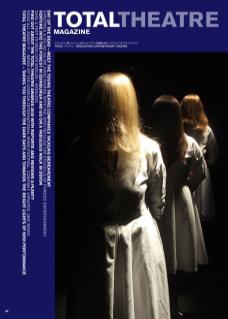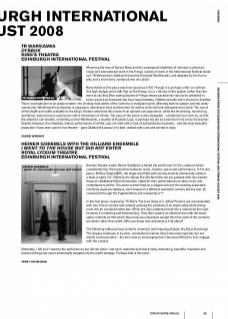German theatre-maker Heiner Goebbels is hailed the world over for his creations which consistently blur the boundaries between music, theatre, opera and performance. In his last piece, Stifters Dinge (2007), the stage was filled with moving musical instruments without a body in sight. For I Went to the House But Did Not Enter we are greeted with four bodies: those of celebrated Hilliard Ensemble, noted for their performances of early music and contemporary works. The piece is described as a staged concert, the evening separated into three separate tableaux, each based on a different twentieth-century literary text, all connected through the fragmentation and anonymity of ‘I’.
In the first piece, inspired by TS Eliot’s 'The Love Song of J. Alfred Prufock', we are presented with four trench-coated men soberly packing the contents of an impeccably white dining room into an oversized white box. When the men suddenly break into a restrained four-part harmony it is startling and mesmerising. They then unpack an identical box with the exact same contents as that which they have just unpacked, except this time most of the contents are black rather than white. Who are these men and what is it all about?
The following tableaux have similarly cinematic and imposing designs (by Klaus Grunberg). The singing continues in its stoic, unemotional manner which becomes hypnotic but not wholly communicative – the tone was so unchanging that it became difficult to truly engage with the content.
Ultimately, I felt as if I went to the performance but did not enter; I sat back, watched and heard many interesting, beautiful, mundane and profound things but never emotionally stepped into the world onstage. Perhaps that is the point.

